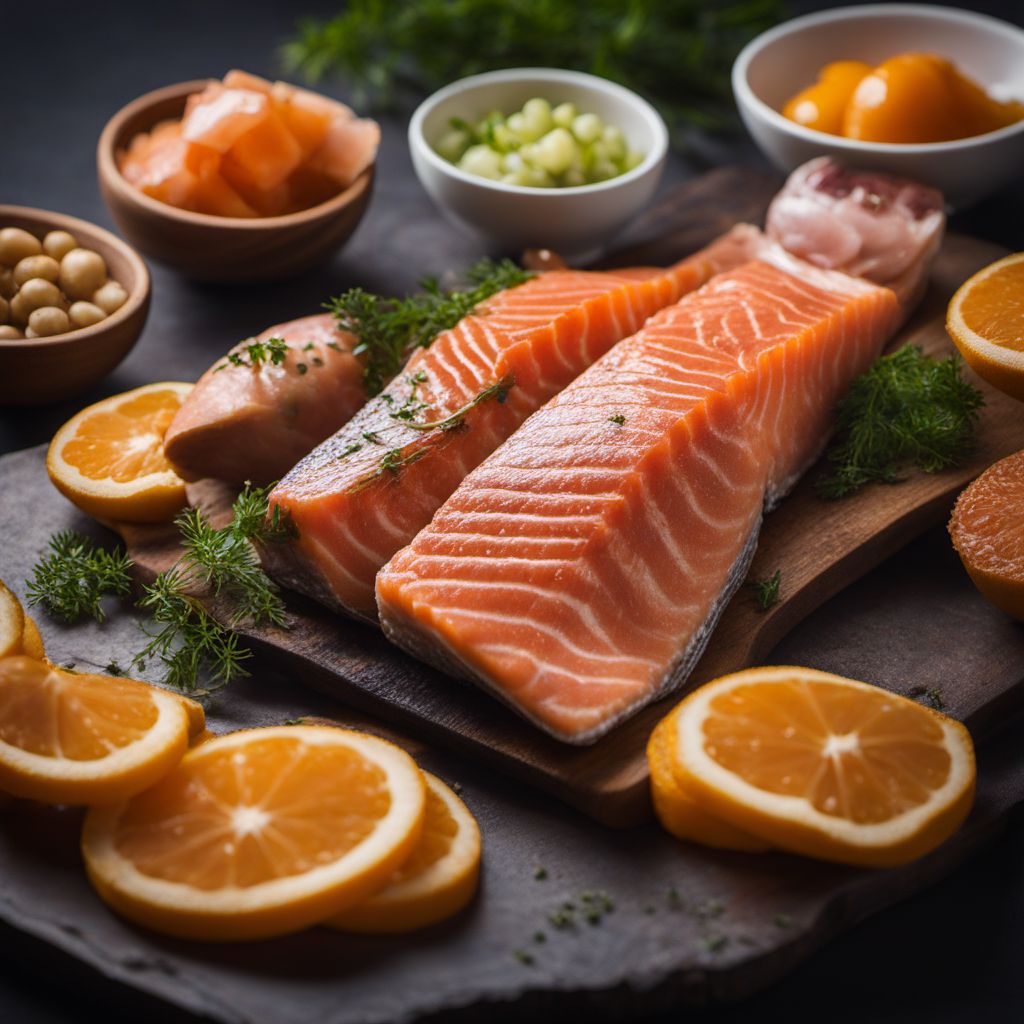
Ingredient
Chum salmon
The Mighty Fish of the North
Chum salmon have a distinctive appearance, with a silver-blue coloration and dark vertical stripes along their sides. They have a firm and meaty texture, making them ideal for grilling, baking, or smoking. The flavor of chum salmon is robust and full-bodied, with a pronounced richness that is often described as buttery and slightly sweet.
Origins and history
Chum salmon are native to the northern Pacific Ocean, particularly in the coastal regions of North America and Asia. They have been an important food source for indigenous communities for thousands of years, providing sustenance and cultural significance. Chum salmon are known for their remarkable migration patterns, traveling long distances from the ocean to freshwater rivers and streams to spawn.
Nutritional information
Chum salmon is a nutrient-dense fish that is packed with protein, omega-3 fatty acids, and essential vitamins and minerals. It is a good source of vitamin D, vitamin B12, selenium, and potassium. A 3-ounce serving of chum salmon provides around 150 calories, making it a healthy and satisfying choice for a balanced diet.
Allergens
Fish allergies are relatively common, and some individuals may be allergic to chum salmon. Symptoms of a fish allergy can range from mild to severe and may include hives, swelling, difficulty breathing, or anaphylaxis. It is important to seek medical advice if you suspect a fish allergy.
How to select
When selecting chum salmon, look for fish that have bright, clear eyes, shiny skin, and a fresh, ocean-like smell. The flesh should be firm to the touch and bounce back when pressed. Avoid fish with dull or discolored skin, sunken eyes, or a strong fishy odor. If purchasing whole fish, the gills should be bright red and the scales should be intact.
Storage recommendations
To maintain the freshness and quality of chum salmon, it is best to store it in the refrigerator. Wrap the fish tightly in plastic wrap or place it in an airtight container to prevent exposure to air and moisture. It is recommended to consume chum salmon within 2-3 days of purchase. If you are not planning to use it immediately, you can freeze chum salmon by wrapping it tightly in plastic wrap and placing it in a freezer-safe bag or container. Frozen chum salmon can be stored for up to 3 months.
How to produce
Chum salmon are primarily caught in the wild, and their production is dependent on natural populations. However, individuals can support sustainable fishing practices by purchasing chum salmon from reputable sources that follow responsible fishing methods. It is not feasible for amateurs to raise chum salmon due to their complex life cycle and habitat requirements.
Preparation tips
Chum salmon can be prepared in various ways, including grilling, baking, broiling, or smoking. It is delicious when marinated with herbs, spices, or citrus flavors. Chum salmon fillets can be seasoned with salt, pepper, and olive oil, then grilled or baked until cooked through. Smoked chum salmon is a popular delicacy, with a rich and smoky flavor that pairs well with cream cheese, bagels, or salads. Chum salmon can also be used in recipes such as fish tacos, fish cakes, or pasta dishes.
Culinary uses
Chum salmon is a versatile ingredient that is used in a wide range of culinary applications. It is commonly grilled, baked, or smoked to highlight its rich flavor and firm texture. Chum salmon is often served as a main course, accompanied by various side dishes such as roasted vegetables, rice, or salads. It is also used in sushi, sashimi, and other raw preparations. Additionally, chum salmon can be canned or preserved for longer shelf life.
Availability
Chum salmon is commonly available in the coastal regions of North America, particularly in Alaska, British Columbia, and the Pacific Northwest. It is also found in parts of Asia, including Russia and Japan. Chum salmon is harvested during specific seasons, typically in the summer and fall months.
More ingredients from this category
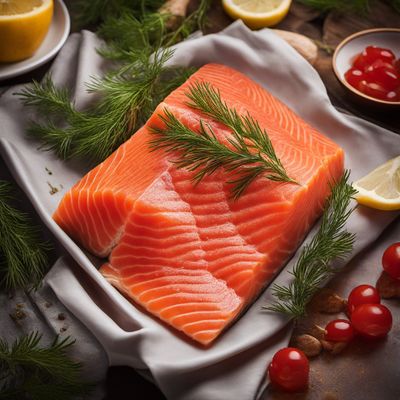
Coho salmon
The Mighty Coho: A Delicate and Nutritious Catch
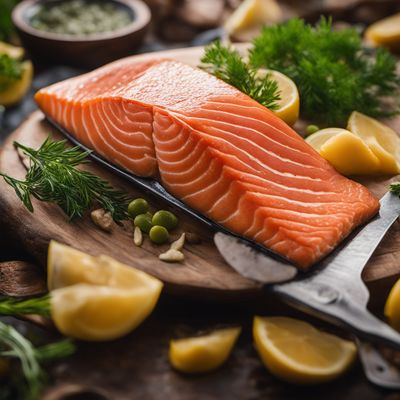
Chinook salmon
The King of Salmon
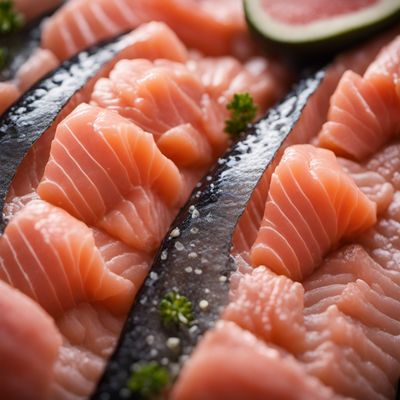
Pink salmon
The Vibrant Delight: Exploring the World of Pink Salmon
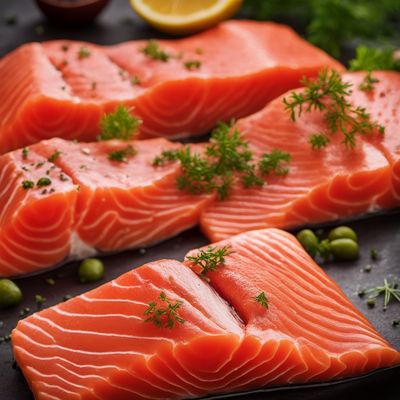
Sockeye salmon
The Mighty Sockeye: A Nutrient-Rich Delicacy from the Sea

Cherry salmon
The Delicate Delight: Exploring the Flavors of Cherry Salmon
Recipes using Chum salmon » Browse all

Chinese Almond Pudding
Silk Road Delight: Chinese Almond Pudding
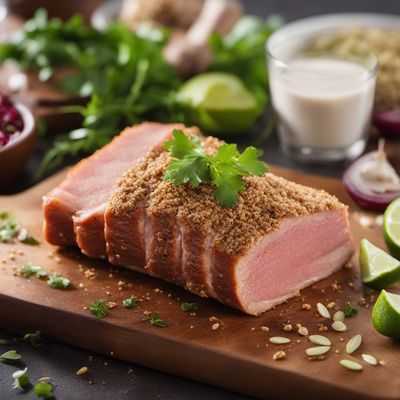
California-style Leberkäse
Sunshine Delight: California-inspired Leberkäse

California-style Yomari
Sun-kissed Yomari Delight

Revani with a Twist
Deliciously Moist Turkish Semolina Cake
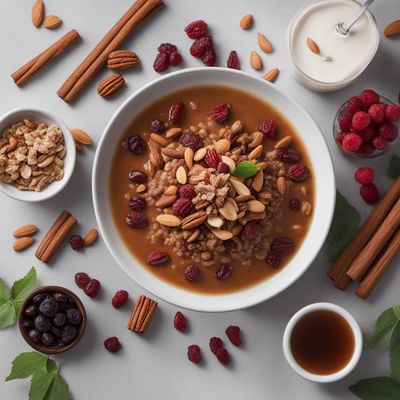
Vegan Kozinjak
Plant-Based Delight: Vegan Kozinjak - A Croatian Classic Reinvented
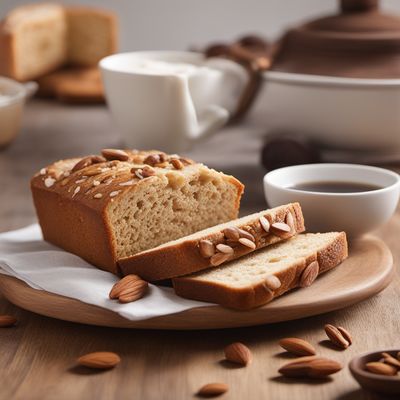
Chinese Imperial Almond Bread
Imperial Almond Delight: A Regal Twist on Classic Bread

Bica Blanca - Portuguese Almond Cake
Deliciously Nutty Portuguese Almond Cake

Andorran Almond Cream with Cherry Sauce
Delicious Andorran Almond Cream: A Sweet Symphony of Flavors
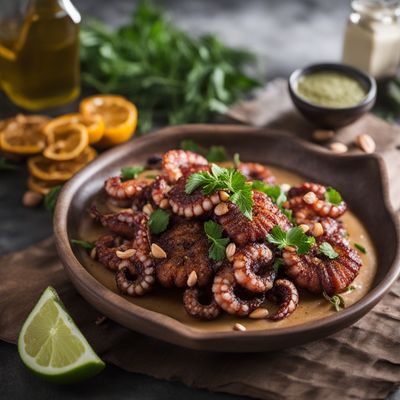
Grilled Octopus with Almond Sauce
Oceanic Delight: Grilled Octopus with Creamy Almond Sauce

Malawian-style Flaons de Morella
Savory Malawian Pastries with a Spanish Twist

Chinese American Easter Cake
Springtime Delight: Chinese American Easter Cake

Monégasque Almond Štrukli
Delicate Almond-filled Pastry Rolls: A Monégasque Twist on a Croatian Classic